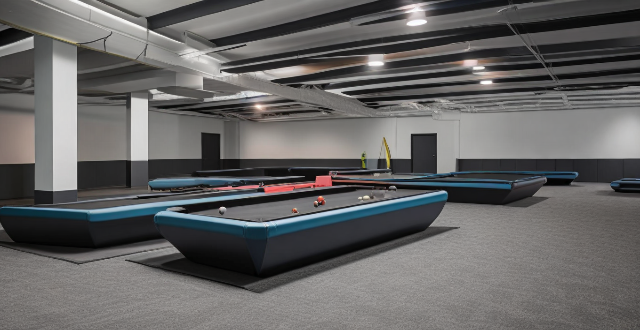The size and capacity of a sports venue significantly impact its design, affecting everything from seating arrangements and accessibility to safety measures and technology integration. By carefully considering these factors during the planning stages, designers can create venues that provide an enjoyable and safe experience for all attendees while also meeting operational needs.

How Does the Size and Capacity of a Sports Venue Affect Its Design?
The size and capacity of a sports venue play a crucial role in determining its design. The following are some ways in which these factors affect the design of a sports venue:
1. Seating Arrangement
The seating arrangement is one of the most important aspects of a sports venue's design. The size and capacity of the venue will determine how many seats can be accommodated and how they should be arranged to provide a good view of the playing field or court.
Factors to Consider:
- Viewing angles: The seating arrangement should provide clear views of the playing area for all spectators.
- Sightlines: The sightlines should be unobstructed, ensuring that everyone has a good view of the game.
- Seating comfort: The seats should be comfortable and spacious enough to accommodate different body sizes.
2. Accessibility
Accessibility is another important factor that affects the design of a sports venue. The size and capacity of the venue will determine how accessible it is for people with disabilities or limited mobility.
Factors to Consider:
- Wheelchair accessibility: The venue should have designated areas for wheelchair users, with easy access to restrooms, concessions, and exits.
- Elevators and escalators: Large venues may require elevators and escalators to transport spectators between different levels.
- Signage: Clear signage should be provided to guide spectators to their seats, restrooms, and other facilities.
3. Safety and Security
Safety and security are critical concerns when designing a sports venue, especially one with a large capacity. The size and layout of the venue will impact how safety measures are implemented.
Factors to Consider:
- Emergency exits: Adequate emergency exits should be provided throughout the venue, allowing for quick evacuation in case of an emergency.
- Crowd control: Proper crowd control measures should be implemented to prevent overcrowding and ensure the safety of spectators.
- Security personnel: Sufficient security personnel should be present to maintain order and respond to any incidents that may occur during the event.
4. Technology Integration
Technology plays an increasingly important role in modern sports venues, enhancing both the fan experience and operational efficiency. The size and capacity of the venue will influence how technology is integrated into its design.
Factors to Consider:
- Scoreboards and displays: Large scoreboards and displays should be visible from all areas of the venue, providing real-time updates on the game's progress.
- Wi-Fi connectivity: A strong Wi-Fi network should be available throughout the venue, allowing fans to stay connected and share their experiences on social media.
- Mobile ticketing: Mobile ticketing systems can streamline entry processes, reducing wait times and improving overall efficiency.
In conclusion, the size and capacity of a sports venue significantly impact its design, affecting everything from seating arrangements and accessibility to safety measures and technology integration. By carefully considering these factors during the planning stages, designers can create venues that provide an enjoyable and safe experience for all attendees while also meeting operational needs.